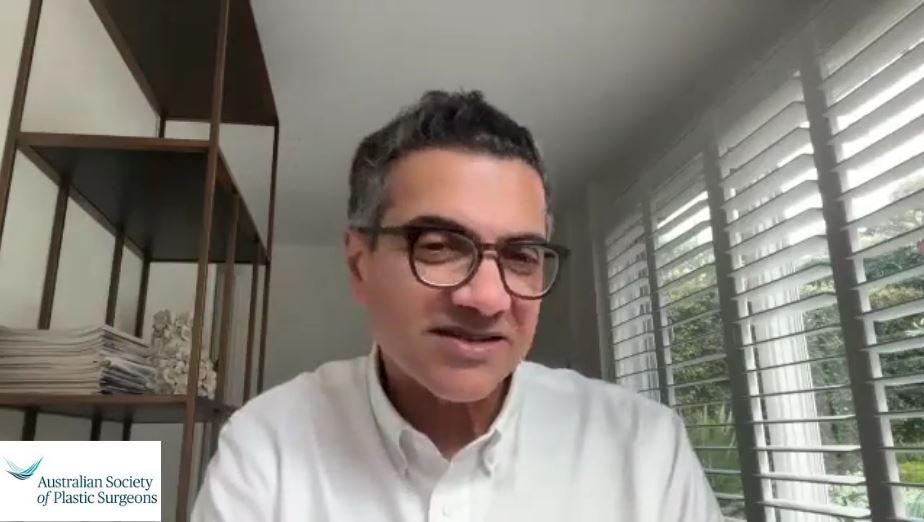Procedures
Skin Cancer
- About Your Specialist Plastic Surgeon
- Cosmetic
- Non-surgical Procedures
- Plastic Surgery Glossary
- Questions for Your Surgeon
- Reconstructive
- Surgical Procedures
- Abdominoplasty (Cosmetic)
- Abdominoplasty (muscle repair postpartum)
- Arm Lift
- Body Contouring
- Body Lift
- Breast Asymmetry Correction
- Breast Augmentation (Implants)
- Breast Implants with Lift
- Breast Lift
- Breast Reconstruction
- Breast Reduction
- Brow Lift
- Burns and Scarring
- Buttocks Lift
- Chin Surgery
- Cleft Lip & Palate
- Ear Surgery
- Eyelid Reduction Surgery
- Facelift Surgery
- Facial Implants
- Fat injection
- Gender Affirming Surgeries
- Gynaecomastia (Male Breast Reduction)
- Hair Replacement Surgery
- Hand Surgery
- Labiaplasty
- Liposuction
- Nipple Enhancement for Inverted Nipples
- Nose Surgery
- Scar Revision
- Skin Cancer
- Thigh Lift
- Tissue Expansion
Skin Cancer
Any surgical or invasive procedure carries risks. Before proceeding, you should seek a second opinion from an appropriately qualified health practitioner.
There are three main types of skin cancer:
- Basal cell carcinoma
- Squamous cell carcinoma
- Melanoma
The first two are often called “non-melanoma skin cancer”.
Basal Cell Carcinoma
Basal Cell Carcinoma (BCC) is by far the most common type of skin cancer. Fortunately, it’s also the least dangerous. Three-quarters of Australians who have skin cancer have BCC. It tends to grow slowly, and rarely spreads beyond its original site. However, if left untreated, it can grow deep beneath the skin and into the underlying tissue and bone, causing serious damage, particularly if it is located near the eye.
Squamous Cell Carcinoma
Squamous Cell Carcinoma (SCC) is faster growing than Basal Cell Carcinoma (BCC). Of those Australians with skin cancer, about 2 in 10 have a SCC. It frequently appears on the head, neck, hands and forearms, which typically receive more sunlight. SCC is more dangerous than BCC because it can spread to other parts of the body if not treated promptly. SC can become life threatening if left untreated.
SCC looks like a red scaly spot or lump and is usually thickened. It can bleed easily and may ulcerate. It is usually tender to the touch.
Melanoma
Although melanoma is usually highly malignant, it occurs in only about 5 people out of 100 with skin cancer. Melanoma can usually be treated successfully if diagnosed early. If it’s not treated quickly, however, malignant melanoma may spread throughout the body and is often deadly. Malignant melanoma can occur on any part of the body, including areas that have not been exposed to the sun. In women, it is more common in the arms and legs, and in men on the face, back and chest. About half of all cases of melanoma develop from moles. The other half develop on previously normal skin as a new lesion.
Two other common types of skin growths are moles and keratoses.
Moles
are clusters of heavily pigmented skin cells, either flat or raised above the skin surface. While most pose no danger, some-particularly large moles present at birth, or those with mottled colours and poorly defined borders, may develop into malignant melanoma. Moles are frequently removed for cosmetic reasons, or because they’re constantly irritated by clothing or jewellery (which can sometimes cause pre-cancerous changes).
Solar or actinic keratoses
are rough, red or brown, scaly patches on the skin. They are usually found on areas exposed to the sun, and sometimes develop into squamous cell cancer.
Basal and squamous cell carcinomas can vary widely in appearance. The cancer may appear as:
- Small, white or pink nodules or bumps that are smooth and shiny, waxy, or pitted on the surface
- A red spot that is rough, dry, or scaly
- A firm, red lump that may form a crust
- A crusted group of nodules
- A sore that bleeds or doesn’t heal after two to four weeks
- A white patch that looks like scar tissue
Malignant melanoma is usually signalled by a change in the size, shape, or colour of an existing mole, or as a new growth on normal skin. Watch for the “ABCD” warning signs of melanoma:
Asymmetry
– a growth with unmatched halves
Border irregularity
– ragged or blurred edges
Colour
– a mottled appearance, with shades of tan, brown, and black, sometimes mixed with red, white, or blue
Diameter
– a growth more than 6 millimetres across (about the size of a pencil eraser), or any unusual increase in size
It is important that you get to know your skin and examine it regularly, from the top of your head to the soles of your feet, including your back. If you notice any unusual changes on any part of your body, talk to your Specialist Plastic Surgeon for an examination.
If your Specialist Plastic Surgeon suspects that you may have a skin cancer, a biopsy may be needed for diagnosis. This is a quick and simple procedure usually done under local anaesthesia. For a known BCC or SCC, the lesion is usually cut out and sent to a pathology lab for examination under a microscope.
Most skin cancers are removed surgically, by a Specialist Plastic Surgeon or a dermatologist. If the cancer is small, the procedure can be done quickly and easily. The procedure may be a simple excision, which usually leaves a thin, barely visible scar. If examination shows that all the cancer cells have probably been removed, you may not need further treatment.
For a suspected melanoma, the surgeon may remove all or part of the lesion. It is then sent to a laboratory so a pathologist can examine it under a microscope. Depending on the pathologist’s report, a wider excision (that is, taking more skin more deeply) may be recommended. In which case, a skin graft or a skin flap may be required to repair a large area of skin.
- Cryotherapy (freezing the cancer cells)
- Radiation therapy (using x-rays)
- Topical chemotherapy (anti-cancer drugs applied to the skin)
- Laser for small and superficial skin cancers
- An injection of interferon (a protein that can boost the body’s immune response to treat certain BCCs
- Medications to treat some types of superficial BCCs
Depending upon the cancer and the extent of the procedure, surgery for the removal of skin cancer can be performed either as a day case or alternatively with a short hospital stay.
Before undergoing surgery, it is important that you:
- Be as fit as possible to help the recovery process
- Reach your optimal weight
- Check with your surgeon about your medications as some may need to be stopped
- Stop smoking
You will also be asked to provide a complete medical history for your Specialist Plastic Surgeon including any health problems you have had, any medication you are taking or have taken, and any allergies you may have.
You may be advised to stop taking certain medicines such as non-steroidal anti-inflammatory drugs (NSAIDs), aspirin, and medicines that contain aspirin. You may also be asked to stop taking naturopathic substances such as garlic, ginkgo, ginseng and St John’s Wort as they may affect clotting and anaesthesia. Always tell your surgeon EVERYTHING you are taking.
You may be given medicines to take before the surgery, such as antibiotics.
Your surgeon will also advise you if any other tests are required, such as blood tests, X-ray examinations or an Electrocardiograph (ECG) to assess your heart
Prepare a “recovery area” in your home. This may include pillows, ice packs, a thermometer and a telephone within easy reach. Make sure you arrange for a relative or friend to drive you to and from the hospital or clinic. Someone should also stay with you for at least 24 hours after you return home.
Your surgeon should give detailed preoperative instructions. Follow them carefully.
Depending on the extent of the procedure, you may be able to go home the same day. With more complex cases, you may have to stay overnight in hospital or for a few days.
In the case of minor procedures, you may experience some pain and mild discomfort. If a large skin cancer has been removed or a skin graft performed, discomfort and pain may be significant. Pain relief may be required for several days, your Specialist Plastic Surgeon will prescribe painkillers or sedatives if required.
It is normal to experience bruising and swelling. This will usually settle down in the week after surgery. Elevating the affected area will help reduce swelling.
If you experience any of the following symptoms, notify your surgeon immediately:
- Temperature higher than 38ºC or chills
- Nausea, vomiting, shortness of breath or diarrhea
- Heavy bleeding from the incisions
- Leakage of blood or fluid beyond the first day after surgery
- Worsening and/or spreading redness around the incision sites
- Increasing pain or tenderness in either breast
- Any other concerns or problems regarding your surgery, particularly if it appears to be worsening
Your surgeon will give you specific instructions on post-operative care. These instructions may include:
- How to care for your surgical site(s) following surgery
- Medications to apply or take orally to aid healing and reduce the risk of infection
- Specific concerns to look for at the surgical site(s) or in your general health
- When to follow-up with your surgeon
Be sure to ask your surgeon specific questions about what you can expect during your individual recovery period, such as:
- Where will I be taken after my surgery is complete?
- What medication will I be given or prescribed after surgery?
- Will I have dressings/bandages after surgery? If so, when will they be removed?
- Are stitches removed? When have they/will they be removed?
- When can I resume normal activity and exercise?
- When do I return for follow-up care?
Scars are an inevitable part of any invasive surgery. Your Specialist Plastic Surgeon will endeavour to minimise scarring and to keep your scars as inconspicuous as possible.
In the case of removing a large skin cancer, further surgery may be necessary. If the cancer is large or if it has spread to the lymph glands or elsewhere in the body, major surgery may be required. It is important that you have realistic expectations of the functional and cosmetic outcomes from the surgery. Discuss your concerns with your Specialist Plastic Surgeon and your options in achieving the best outcome.
Skin cancer prevention
Basal Cell Carcinoma:
The most common type of skin cancer
Excision:
To remove the skin
General anaesthesia:
Drugs and/or gases used during an operation to relieve pain and alter consciousness
Haematoma:
Blood pooling beneath the skin
Keratoses:
Solar or actinic keratoses are rough, red or brown, scaly patches on the skin
Local anaesthesia:
A drug injected directly to the site of an incision during an operation to relieve pain
Melanoma:
A malignant form of melanoma that can appear on any part of the body including areas that are not exposed to the sun
Moles:
Clusters of heavily pigmented skin cells, either flat or raised above the skin surface
Squamous Cell Carcinoma:
A type of skin cancer that frequently appears on the head, neck, hands and forearms
Ultraviolet Light:
Ultraviolet (UV) light refers to light emitted from the sun
Visit the Plastic Surgery Glossary for more medical terms.
This website is intended to provide you with general information only. This information is not a substitute for advice from your Specialist Plastic Surgeon and does not contain all the known facts about this procedure or every possible side effect of surgery. It is important that you speak to your surgeon before deciding to undergo surgery. If you are not sure about the benefits, risks and limitations of treatment, or anything else relating to your procedure, ask your surgeon to explain. Patient information provided as part of this website is evidence-based, and sourced from a range of reputable information providers including the American Society of Plastic Surgeons, Better Health Channel and Mi-tec medical publishing.
Featured Stories

Member Blog with Dr Ellis Choy: What is a Deep Plane Facelift?
Who is the ideal candidate for a deep plane facelift?…
Continue reading
